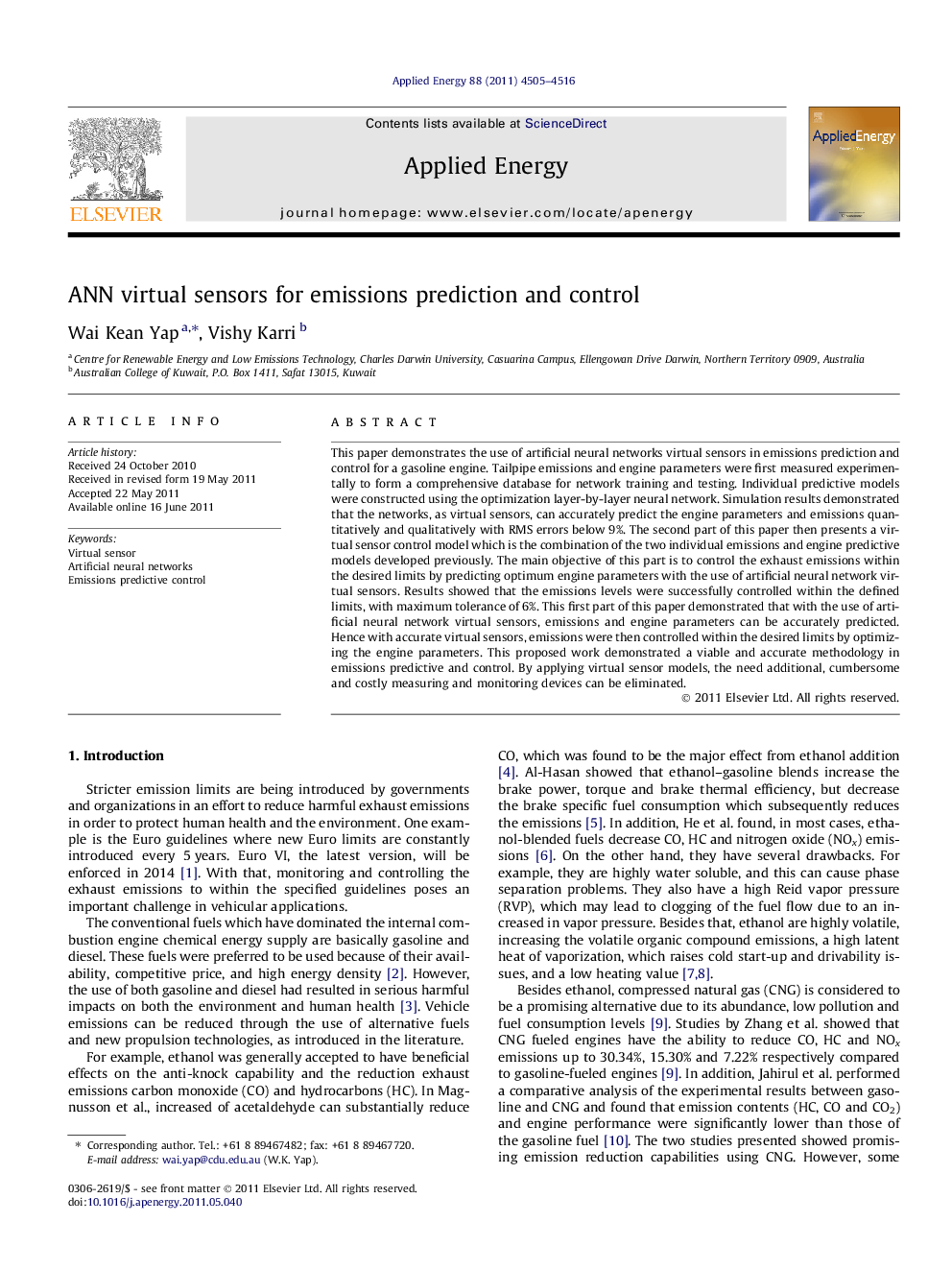| Article ID | Journal | Published Year | Pages | File Type |
|---|---|---|---|---|
| 243971 | Applied Energy | 2011 | 12 Pages |
This paper demonstrates the use of artificial neural networks virtual sensors in emissions prediction and control for a gasoline engine. Tailpipe emissions and engine parameters were first measured experimentally to form a comprehensive database for network training and testing. Individual predictive models were constructed using the optimization layer-by-layer neural network. Simulation results demonstrated that the networks, as virtual sensors, can accurately predict the engine parameters and emissions quantitatively and qualitatively with RMS errors below 9%. The second part of this paper then presents a virtual sensor control model which is the combination of the two individual emissions and engine predictive models developed previously. The main objective of this part is to control the exhaust emissions within the desired limits by predicting optimum engine parameters with the use of artificial neural network virtual sensors. Results showed that the emissions levels were successfully controlled within the defined limits, with maximum tolerance of 6%. This first part of this paper demonstrated that with the use of artificial neural network virtual sensors, emissions and engine parameters can be accurately predicted. Hence with accurate virtual sensors, emissions were then controlled within the desired limits by optimizing the engine parameters. This proposed work demonstrated a viable and accurate methodology in emissions predictive and control. By applying virtual sensor models, the need additional, cumbersome and costly measuring and monitoring devices can be eliminated.
► Virtual sensors were modelled using artificial neural networks. ► The virtual sensors were applied as predictive models to control and optimize exhaust emissions. ► Accurate predictions were achieved and emissions were controlled by optimizing engine parameters without vehicle modification. ► Models developed are generic and is applicable to other vehicular applications.
